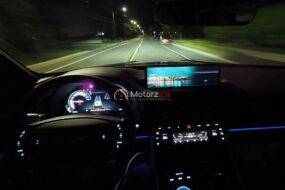Revolutionizing Transportation The Promise of Hyperloop In the ever-evolving landscape of transportation, where speed and efficiency are paramount, a groundbreaking innovation has emerged—Hyperloop. Conceived by Elon Musk in 2013, the Hyperloop concept promises to revolutionize the way we think about and experience transportation. This ambitious and futuristic mode of travel holds the potential to redefine the very fabric of our societies, offering unparalleled speed, energy efficiency, and sustainability.
The Essence of Hyperloop
Revolutionizing Transportation At its core, the Hyperloop is a high-speed transportation system that utilizes sealed capsules, or pods, within low-pressure tubes to transport passengers and cargo at incredible speeds. These capsules, or pods, are designed to travel through a near-vacuum environment, eliminating air resistance and enabling speeds that far exceed those achievable by traditional modes of transportation.
The Technology Behind Hyperloop
Hyperloop’s technological underpinnings are as fascinating as the concept itself. Magnetic levitation, augmented by low-pressure environments, propels the capsules forward at tremendous speeds. This levitation eliminates the friction and resistance experienced in traditional rail or road travel, offering an efficient and smooth journey. Furthermore, the Hyperloop is powered by renewable energy sources, making it an eco-friendly alternative to conventional transportation. Solar panels lining the exterior of the tubes harness energy to power the system, aligning with the global push towards sustainability and reduced carbon footprints.
Unprecedented Speed and Efficiency
One of the most compelling aspects of Hyperloop is its ability to achieve speeds that were once deemed impossible for mass transportation. With theoretical speeds reaching up to 700 miles per hour, Hyperloop has the potential to significantly reduce travel times between cities, transforming what used to be hours-long journeys into mere minutes. For instance, a trip from Los Angeles to San Francisco, which typically takes over six hours by car, could be completed in just 30 minutes with the Hyperloop. This newfound efficiency not only saves time but also holds the promise of unlocking economic opportunities by seamlessly connecting distant regions.
Economic and Societal Impacts
The Hyperloop’s impact extends beyond its ability to cut travel times. Its potential economic benefits are vast, creating new avenues for growth and development. The enhanced connectivity between Vehicles could lead to the formation of mega-regions, where economic activities and innovation flourish. In addition to economic benefits, the Hyperloop has the potential to alleviate traffic congestion and reduce the strain on existing transportation infrastructure. As cities continue to grow, the Hyperloop offers a scalable and sustainable solution to meet the increasing demand for efficient and rapid transportation.
Challenges and Considerations
While the Hyperloop concept is undeniably revolutionary, it is not without its challenges and considerations. The construction of the infrastructure required for the Hyperloop poses significant engineering and logistical hurdles. Securing the necessary land rights, navigating regulatory frameworks, and addressing safety concerns are all vital aspects that must be carefully managed for the successful implementation of Hyperloop systems. Moreover, the high upfront costs associated with developing the Hyperloop infrastructure require substantial investment. The feasibility of such projects may hinge on public and private collaboration to ensure the long-term viability of Hyperloop transportation.
The Future of Hyperloop
As technological advancements continue to reshape our world, the Hyperloop stands at the forefront of transportation innovation. Prototype tests and feasibility studies are ongoing, with various companies and governments exploring the potential of this transformative technology. The vision of a global Hyperloop network, seamlessly connecting cities and countries, is no longer confined to the realm of science fiction. While challenges persist, the promise of revolutionizing transportation through the Hyperloop remains a beacon of hope for a future where speed, efficiency, and sustainability converge in unprecedented ways.
Conclusion
In conclusion, Revolutionizing Transportation the Hyperloop represents a paradigm shift in the way we approach transportation. Its potential to revolutionize the industry, connect distant regions, and reshape economies makes it a captivating prospect for the future. As we navigate the complexities of implementation and address the challenges ahead, the promise of Hyperloop remains a testament to human ingenuity and our ceaseless pursuit of progress. The Hyperloop’s journey from concept to reality holds the key to unlocking a new era of transportation—one that transcends the limits of speed, efficiency, and sustainability.





